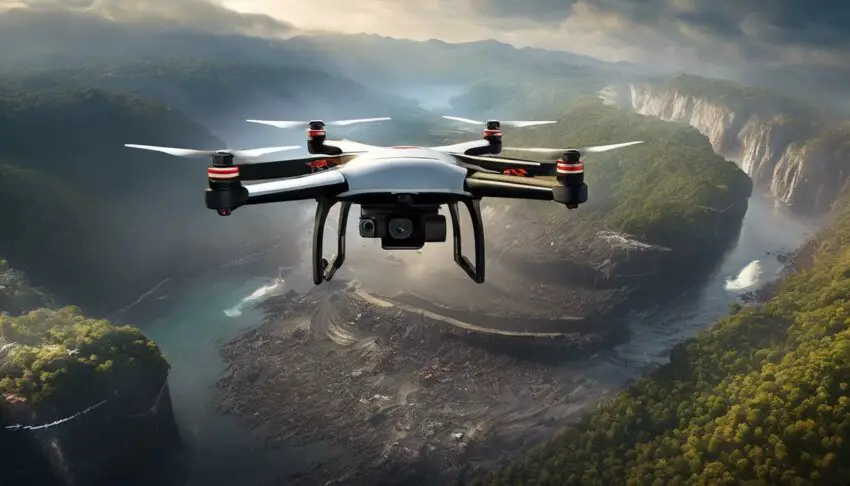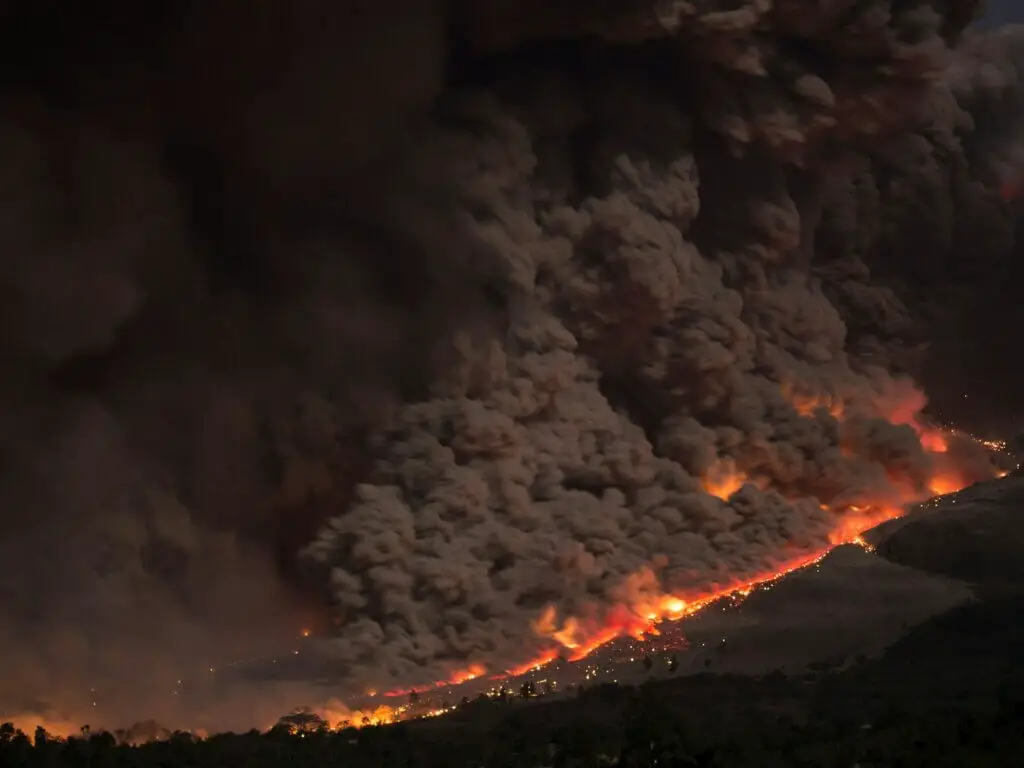We may earn money or products from the companies mentioned in this post.
Disaster Response Drones
When disaster strikes, the window for response is narrow, and every second counts. Enter the fleet of disaster response drones, an innovative arsenal of aerial technology equipped to navigate the aftermath of calamities with precision and speed. This article ventures into the dynamic realm of these high-flying helpers, from fixed-wing aircraft gliding over expansive terrains to agile multirotors hovering amidst ruins. Here, capabilities such as lengthy flight times, substantial payload capacities, and robust resilience against the elements come to the forefront. We will explore how these mechanical marvels are not just tools, but lifelines, extending the reach of human efforts in search and rescue, infrastructure evaluation, and delivery of crucial supplies. Drones have swiftly become indispensable in mitigating the impact of disasters, and as we delve into real-world applications, we witness the tangible benefits of drone technology at the heart of emergency response.
Types and Features of Disaster Response Drones
Drones to the Rescue: A Game Changer in Disaster Response
When natural calamities strike, time becomes a luxury we can hardly afford. That’s where the tech marvel, often enjoyed as a pastime, swoops in to become a hero – drones. Not your garden-variety drone whizzing through suburban skies, but specially designed UAVs (Unmanned Aerial Vehicles) with features that make them ideal for navigating the chaos of disaster zones.
For starters, these drones are built tough. They have to be, to withstand the harsh elements and erratic conditions they encounter. Enhanced durability and weatherproofing allow them to soar through strong winds, rain, or even dust storms. But what really sets these machines apart is their advanced imaging capabilities. Equipped with high-resolution cameras and thermal imaging, they can spot a person buried under rubble through heat signatures, or survey widespread damage in crystal-clear detail, all from a bird’s-eye view. This means rescue teams can locate survivors and assess damage without putting themselves in immediate danger, streamlining the entire response operation.
Additionally, communication is key during a crisis, and disaster-response drones excel here as well. With the ability to carry communication payloads, they transform into flying Wi-Fi hotspots or cellular towers, restoring critical connections to the outside world. This can mean the difference between isolation and getting that urgent call for help through. Also, their agility and GPS precision in mapping impacted areas ensure that help is directed exactly where it’s needed most, avoiding further delays. In essence, drones are a force multiplier in disaster zones, bridging the gap between the immediate aftermath and the arrival of aid. They’ve become indispensable tools, proving that with the right features, these high-fliers can truly save the day.

Use Cases and Applications
When disaster strikes, every second counts. That’s where drones swoop in, quite literally, to provide real-time data critical for making swift decisions. They are adept at flying over areas where the terrain has become treacherous or inaccessible to traditional rescue vehicles or personnel. Imagine a flood or an earthquake has just transformed a familiar landscape into an alien and hazardous one. It’s in scenarios like this that drones become the eyes in the sky, relaying footage to command centers which then coordinate rescue and relief efforts more effectively.
Drones also have the unique advantage of being deployable in swarms. This isn’t just about quantity; it’s about collaborative intelligence. A swarm of drones can cover expansive areas much faster than any single unit, no matter how well-equipped. When deployed, they create a live, detailed mosaic of the situation, providing updates that are as close to real-time as possible. This networked fleet approach not only speeds up the search for survivors but also helps to identify safe zones for setting up temporary shelters or aid delivery points.
Additionally, drones are increasingly being used in delivering essential supplies to areas that are too risky or impassable for humans and ground vehicles. They can transport medical supplies, food, water, and even portable shelters to stranded survivors. In certain scenarios, these nimble machines can be literal lifelines, dropping off life-saving equipment to those in acute distress, such as people awaiting rescue on rooftops or isolated by floodwaters. Moreover, as drone technology advances, their payload capacity and flight endurance will only increase, further enhancing their role as invaluable assets in humanity’s response to the unforeseen chaos of natural disasters.

Legal and Ethical Considerations
When talking about drones in disaster response, it’s important to fly into the conversation about legal hurdles. Every pilot knows they’ve got to stay grounded in rules and regulations, even when their drones are soaring.
For starters, there’s all this chatter about airspace regulations. The Federal Aviation Administration (FAA) requires pilots to keep drones within their line of sight, which is kind of a big deal in chaotic disaster zones, where it’s tough to see through walls of debris or sheets of rain. And then, there’s the buzz about altitudes; drones normally can’t fly over 400 feet high or near other aircraft, which can clip their wings in reaching survivors or assessing damage in skyscraper-high stacks of rubble.
- On the flip side, in disaster mayhem, there’s this whole tricky ethical side dealing with privacy.
- Picture a drone cruising over neighborhoods, snapping photos with its high-tech eyes.
- Sure, this helps pinpoint trouble spots and finds people in need, but it also captures snapshots of someone’s busted home or their not-so-secret backyard.
- It’s a tightrope walk between aiding the community and nosing into people’s private lives without an invite.
- And let’s not overlook the stress factor; drones buzzing over your head can be another layer of anxiety for folks who just had their world turned upside down.
So, while drones are ace players in the disaster response game, zipping goods to stranded victims, and being heroes in their own right, it’s crucial for those holding the controllers to navigate through the tangle of red tape and do right by the golden rule.They need to be keyed in on the legal skies and ethically in tune, so everyone wins when the next big one hits and drones take flight on their life-saving missions.

Future of Disaster Response Drones
We look to the future of disaster response drones, one can’t help but get excited about the pending advancements that promise to revolutionize the way aid is delivered in crisis situations. And yet, there are also challenges that must be overcome to ensure these technological marvels are utilized effectively and responsibly.
As the horizon looms the exciting prospect of fully autonomous drone operations, which stand to dramatically improve response times in disaster scenarios. The vision of drones independently navigating disaster zones, powered by sophisticated artificial intelligence algorithms, suggests a future where help arrives faster than ever before. These smart drones won’t just collect data; they’ll be able to make split-second decisions, like identifying the most critically damaged structures or pinpointing the locations of trapped survivors for rescue crews.
Moreover, battery technology is advancing rapidly, promising extended flight times that could keep drones in the air much longer, providing continual support without the need for frequent recharging. Just imagine drones flying overhead, not just for minutes, but for hours, meticulously surveying flood damage or the aftermath of an earthquake, sending invaluable information back to command centers without pausing.
Yet, with great technology comes great responsibility. Drones will need to navigate an ever-evolving landscape of regulations meant to protect privacy and maintain safety. And while these flying helpers are reshaping disaster response, developing failsafe mechanisms to prevent mishaps is essential. This includes addressing the issue of interference with manned emergency aircraft and ensuring drones can safely share the airspace. In sum, as disaster response drones continue to become more sophisticated, anticipate smarter, longer-lasting, and ethically guided machines. They’ll be zooming across our skies not just as tools, but as guardians, ever-ready to extend a helping technological hand amid the chaos of calamity.
No need to summarize – the future of disaster response drones is as clear as the skies they’ll soon master: onward to brighter, safer days, with each technological leap forging a path to more resilient communities in the face of adversity.

As we have journeyed through the sophisticated ecosystem of disaster response drones, we have encountered the fusion of technology and altruism. The potential for drones to not only save lives but also reshape the efficiency of disaster management is immense. With cutting-edge advancements on the horizon, these machines are poised to become more autonomous, more intelligent, and more integrated into the fabric of emergency services. While we navigate the complexities of laws and moral imperatives, it is clear that drones are setting a new standard in the philanthropy of the skies. As we look ahead, it’s evident that the symbiosis of human ingenuity and technological innovation will continue to redefine the landscape of disaster response, bringing hope and aid faster to where it’s needed most.
You Might Also Like – The Growing Robotic Workforce


